Hawaii is a volcanic archipelago located in the North Pacific Ocean. It consists of eight major islands and numerous smaller ones with a diverse landscape of mountains, valleys, and coastal plains. The “big island”, called Hawaii, is where most of the cattle production takes place. Its latitude is about 19 degrees north with its equivalent latitude in the southern hemisphere being Townsville in Queensland which is about 19 degrees south.
Accordingly, Hawaii has a mild tropical climate with warm temperatures and abundant rainfall. The trade winds, which blow from east to west, interact with the mountains, some as high as 4000 meters, to create a large number of microclimates across the island chain. High rainfall, tropical rainforest type country can be separated from arid grasslands by as little as one kilometre.
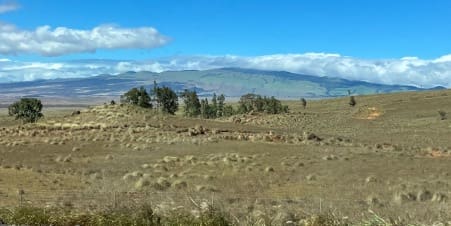
Note the green grass on the upper part of the hill in the distance while down below the grasslands look a lot like the NT during the late dry season.

The cattle are predominantly Angus mixed with a few Euro crosses. There are no ticks in Hawaii and minimal fly worry. We did not see any brahman cattle at all. The majority of ranches in Hawaii have less than 100 head of cattle.
I travelled to Hawaii with Angus and Margi Adnam to meet Kenneth “Suk” Eade, an old friend of theirs from California who was exporting feeder cattle from Hawaii to the USA using specially designed 40 foot containers.
This fascinating process is the subject of my next story for Beef Central.
During the export process it became immediately obvious that the unique cattle industry in Hawaii has a surprising amount in common with the industry in the Northern Territory.
While preparing the cattle for shipment we met with a number of ranchers who, like all cattle producers, enjoyed explaining the positive and negative aspects of their industry.
With a total cattle herd in the order of 130,000 head, mostly located on the big island, there are simply not enough fat cattle produced annually to operate local abattoirs at a level of efficiency that will allow them to compete successfully with the massive processors on mainland USA.
They are unable to grow suitable grain crops on the islands and therefore cannot profitably finish their cattle in local feedlots, so grass fed beef is their only option.
Grass fed beef is generally not the favoured product with local consumers, while plenty of high grade grain fed product is imported from the mainland and available in all the local supermarkets.
Given the marginal returns from local slaughter they therefore send a large proportion of their production as live export feeder cattle to mainland USA.
Now add the controversial Jones Act. This is a famous 1920 federal law that requires any cargo transported by sea between two US ports to be carried by a US owned, built and crewed ship. This means that none of the world’s current livestock vessel fleet comply. Hence, the only options for export to the mainland are with the use of modified shipping containers on US vessels or air freight.
Containers are an expensive option while air freight opportunities are restricted to the infrequent and unpredictable availability of a low cost backload to the US.
Some producers choose to sell their animals to exporters like Suk at the farm gate, while others export them through an agent while retaining ownership during the finishing process in the USA, about 3800 km from home. NT producers will be familiar with this very difficult dilemma of deciding which option is best for their bottom line.
Land tenure in Hawaii is a complex mix of private property, state owned lands and lands held in trust for native Hawaiians. We met with some ranchers who were in dispute with the government over their land title leading to considerable frustration and in some cases doubt about their capacity to remain on their land for the foreseeable future.
Another surprise is that Hawaii has many feral animals including wild cattle located in adjoining parks and reserves as well as feral goats, donkeys, sheep, pigs and deer. These species are a significant nuisance with potential for spread of diseases including bovine tuberculosis and brucellosis which are present in Hawaii but fortunately at very low levels.
The Parker Ranch
One of the many highlights of our trip was when Suk introduced us to Keoki Wood, the manager of the famous Parker Ranch who took us for a tour of this magnificent property.
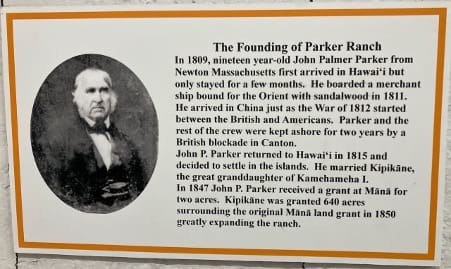
The Parker ranch was gradually expanded by subsequent descendants to become one of the largest ranches in the USA at one time reaching around 500,000 acres. Today the ranch is still a very large 130,000 acres carrying about 30,000 head of Angus cattle.

Parker ranch cattle continue to be managed on horseback by cowboys using traditional US style methods. The odd white face amongst these Angus is evidence that many decades ago the old original Parker ranch herd was pure bred Hereford.
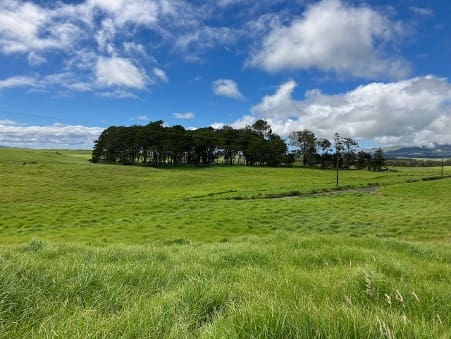
Image having 130,000 acres of this kikuyu grass (a native grass from east Africa) country which looks like a southern Australian dairy farm in the late spring. Keoki explained that it doesn’t always look like this. In fact last year they had an extended dry spell followed by a devastating fire that burnt out a large area of the ranch.
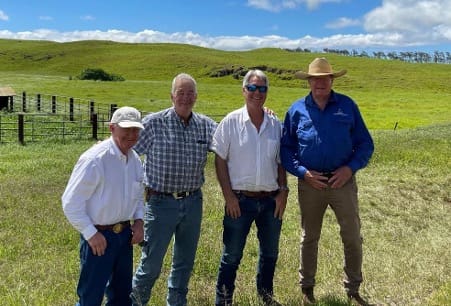
Photo by Margi Adnam: Suk (pronounced Sook) Eade left, Keoki Wood, myself and Angus Adnam far right.
The Parker ranch today is operated by the Parker Ranch Foundation Trust which was established in 1992 after the death of Richard Smart, the last Parker family descendent to personally own the ranch. The Trust’s goal is to preserve the ranch’s cattle production heritage while supporting four community non-profit organizations: Queen’s North Hawaii Community Hospital, Hawaii Community Foundation, Hawaii Preparatory Academy, and the Parker School.
It is also involved in renewable energy, forestry, conservation, hunting, tourism and recently invested in the Waimea butcher shop to promote local business and grass fed Hawaiian beef.
Keoki Wood and his management team have a lot on their plate!
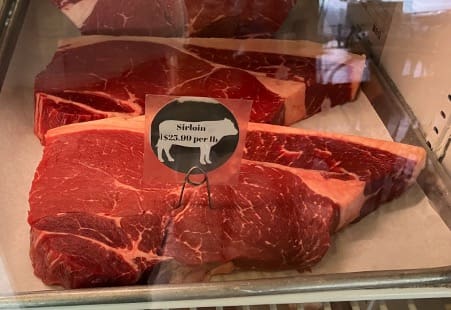
We had lunch with Keoki Wood at the Waimea butcher shop and restaurant which promotes the grass fed beef produced on the island. This combination of a retail butcher shop and restaurant is becoming a popular model across the globe. When you convert the price above to Kg and AUD this very nice looking sirloin is selling for about AUD$85 per kg.
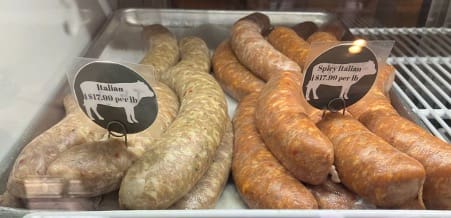
The Waimea butcher shop does a great job preparing and processing grass fed beef into a wide range of products to make the most of the great flavour of grass fed beef.
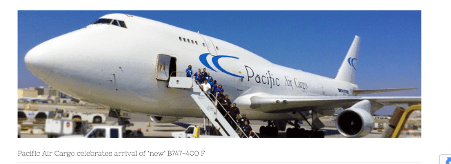
Air-freighting live feeder cattle only works if the cost is dramatically reduced through the availability of a last-minute back load to the US.

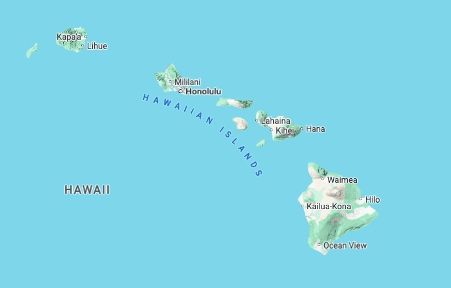
Very impressive information here .
I’d rather eat the Hawaiian beef that is grass fed and NOT corn finished.
Well done
The beef In the photo is definitely rump….see the cap.. however I recall that is the US rump is called TOP sirloin…
I’ll bet many producers in Australia would like to be getting $85 for what looks a lot like rump steak (sirloin in American terms)as would many butchers like myself
Great article, however, that was tempered by the last photograph which supposedly depicts a sirloin steak when in fact it is a photo of a rump steak. Sorry to be picky.
rump in the US is called TOP sirloin…
Cheers Dennis. The US ‘Top Sirloin’ is actually a D-rump, with the tri-tip muscle removed. But granted, the risk of confusion is considerable! Editor